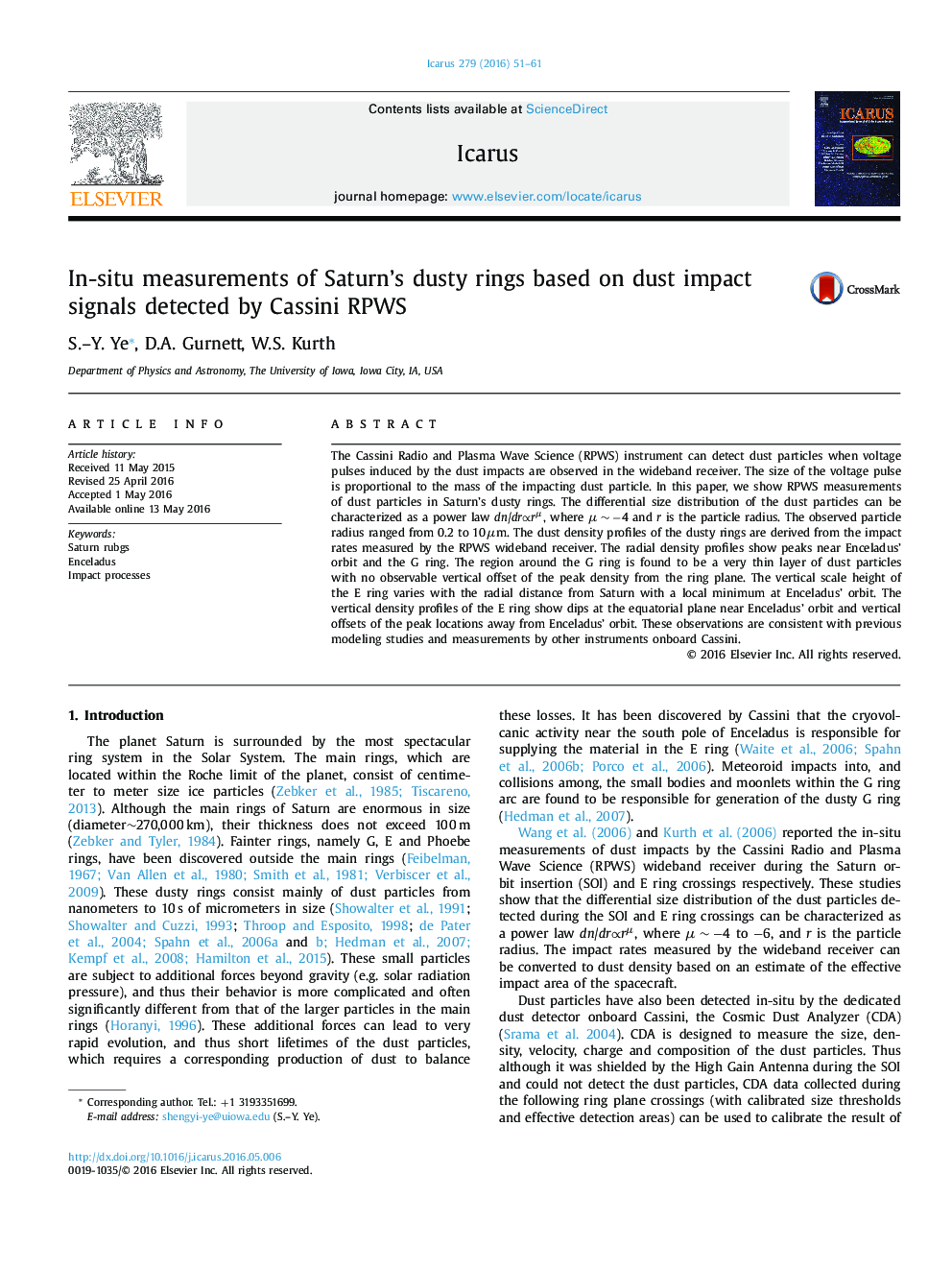| Article ID | Journal | Published Year | Pages | File Type |
|---|---|---|---|---|
| 8134750 | Icarus | 2016 | 11 Pages |
Abstract
The Cassini Radio and Plasma Wave Science (RPWS) instrument can detect dust particles when voltage pulses induced by the dust impacts are observed in the wideband receiver. The size of the voltage pulse is proportional to the mass of the impacting dust particle. In this paper, we show RPWS measurements of dust particles in Saturn's dusty rings. The differential size distribution of the dust particles can be characterized as a power law dn/drârμ, where μâ¼â4 and r is the particle radius. The observed particle radius ranged from 0.2 to 10âμm. The dust density profiles of the dusty rings are derived from the impact rates measured by the RPWS wideband receiver. The radial density profiles show peaks near Enceladus' orbit and the G ring. The region around the G ring is found to be a very thin layer of dust particles with no observable vertical offset of the peak density from the ring plane. The vertical scale height of the E ring varies with the radial distance from Saturn with a local minimum at Enceladus' orbit. The vertical density profiles of the E ring show dips at the equatorial plane near Enceladus' orbit and vertical offsets of the peak locations away from Enceladus' orbit. These observations are consistent with previous modeling studies and measurements by other instruments onboard Cassini.
Keywords
Related Topics
Physical Sciences and Engineering
Earth and Planetary Sciences
Space and Planetary Science
Authors
Ye S.-Y., D.A. Gurnett, W.S. Kurth,
